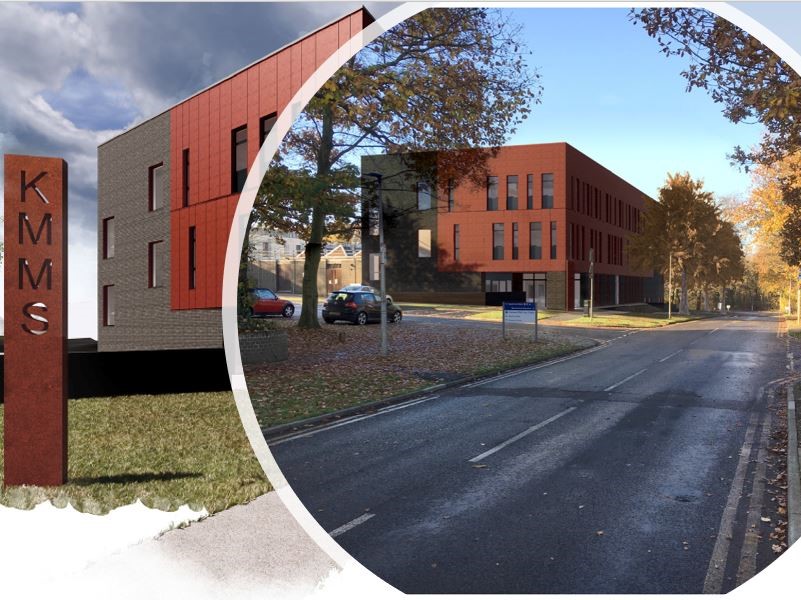
Chris started his talk by saying: “I think I have the best job in the world” – and his enthusiasm for his work and for the new school certainly came through in his talk.
Chris was the first person in his family to become a doctor, obtaining his medical degree from Queen’s University Belfast in 1997. He trained in Northern Ireland, Australia, the Midlands, London and the South East of England, and has been working in university and medical school leadership roles for a decade. He is a Fellow of the Royal College of Anaesthetists, the Faculty of Intensive Care and the Academy of Medical Educators. He is an elected member of the National Council of the Academy of Medical Educators and leads the Academy’s Equality and Diversity Group. He joined Kent and Medway Medical School (KMMS) from the University of Surrey where he was a Professorial Teaching Fellow and Director of Learning and Teaching for Medicine. He is also an Anaesthetic and Intensive Care Specialist and works as a Consultant in General Adult Intensive Care Medicine, currently based a King’s College Hospital in London.
He described how in his new role he has “an exciting opportunity to change how we train doctors” and told us that he wants to improve (medical) education and also bring research to healthcare. He feels that the new medical school will bring together existing centres of excellence in health and medical education and described how the potential for widening participation, clinical placements and the support of two universities like the University of Kent and Canterbury Christ Church University is unique.
The vision for the new medical school is for it to become “a beacon for first-class medical education and research, and the first choice for all those aspiring to achieve excellence in person-centred medical care in the UK”. Chris felt the bid for a new Medical School in Kent and Medway had been successful due to its focus on widening participation (i.e. encouraging people that might not otherwise consider a career in medicine) and the fact that it will address significant health inequalities in Kent and Medway. The proposed curriculum will be highly innovative and placements will be high-quality. They plan to ensure that all students have significant exposure to primary care, mental health and acute medicine.
In terms of widening participation, Chris and his colleagues plan to use ‘evidence-based selection processes’ and try to remove hidden criteria which require ‘cultural capital’ from the selection processes while retaining academic excellence. They also plan to help support students that struggle with financial, academic or pastoral issues while they are studying. For instance, a number of scholarships and bursaries will be available. Investment in medical education is substantial and, as Chris says, “it would be terrible if a student were to fail at the final hurdle in the final year” because of a financial crisis.
The University of Kent and Canterbury Christ Church University will have joint leadership and the initiative will draw on the collective resources of both local universities; the two universities have already been working together for a long time without treading on each other’s toes. KMMS medical degrees will be jointly awarded from the University of Kent and Canterbury Christ Church University. Buildings and infrastructure will exist on both campuses – Chris showed some of the building designs, including the new building that will be on the edge of the University of Kent campus. There will be a state-of-the art lecture theatre that differs from the traditional design, allowing students to engage with the patient’s experience of healthcare. The school will have the first simulated GP practice, giving students experience of working in such an environment during their training. There also are plans for a centre for postgraduate medicine. A £65 million STEM building is being developed behind the old prison at the Christ Church campus. Buildings will all be complete by September 2020, when the first new intake will start.
Not only will buildings be innovative, the programme will also be ground breaking. Students will be introduced to clinical practice early on – with a day a week in General Practice and Community Care from week 8 of their 1st year and into their 2nd year. In the 3rd year there will be integrated placements which demonstrate the vital inter-relationship between mind and body. As already available in many medical schools, there will also be an intercalated or placement year. In the 4th year students will spend a day a week in GP and Community Care as well as on integrated hospital placements, and a day a week will be spent on a scholarly academic project. In the 5th Year students will be busy with assistantships, finals, electives and transition to practice.
The school is making great headway with recruitment of staff, with global interest in posts. Two more rounds of recruitment lie ahead. Meanwhile, the programme and curriculum are being finalised and a research strategy will be developed. The School has also developed a number of other important partnerships – for instance, with Brighton and Sussex Medical School and with the NHS for research, teaching and recruitment.
Our Members were very excited to hear about the plans and President Margaret echoed the feelings of many when she wished Chris well in the new venture and hoped that our Club can in some way work together will the new school in the future.
For more information about KMMS, visit the website.
Picture: The planned new building at the University of Kent campus. Picture credit: Kent and Medway Medical School (reproduced with permission).


